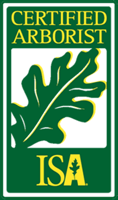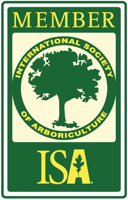Key Tree Care Practices to Implement Now
South Florida’s storm season is fast approaching—bringing high winds, heavy rains, and the ever-present threat of hurricanes. While no amount of preparation can completely eliminate risk, proactive tree care can greatly reduce the chance of devastating damage to your property. Between ensuring your trees have sturdy branch structures and eliminating potential hazards around your yard, a bit of effort today can save thousands in emergency repairs when a storm hits.
In this blog post, we’ll explore essential tree care practices to ready your landscape for the upcoming storm season. By focusing on pruning, disease management, root stability, and more, you’ll be better equipped to protect your home or business from the worst nature can deliver.
1. Schedule a Professional Tree Inspection
A tree that appears healthy from the outside could be harboring structural weaknesses or hidden decay. That’s why a thorough, professional tree inspection is a vital first step in storm preparation. Certified arborists employ specialized tools and trained eyes to detect issues like:
- Internal Rot: Fungal infections in the trunk or large limbs weaken wood fibers, increasing the likelihood of snapping.
- Pest Infestations: Certain insects or borers can hollow out branches, making them vulnerable to breakage.
- Unstable Root Systems: Soil compaction, root rot, or construction damage can compromise the tree’s foundation.
If problems are detected early, you’ll have the option to treat or remove hazardous trees in a controlled, cost-effective manner—rather than paying for emergency removal after a storm.
2. Prune for Safety and Stability
Proper pruning is one of the most effective ways to minimize storm-related damage. By removing weak, dead, or overgrown branches, you reduce “wind sails” and overall weight, making trees less likely to break or topple. Here’s what to focus on:
- Deadwood Removal: Dead or dying limbs are often the first to snap off in strong winds. Eliminating them proactively avoids falling debris.
- Crown Thinning: Selective thinning of the canopy allows wind to pass through more easily, lowering the stress on trunks and roots.
- Structurally Sound Branch Angles: A certified arborist will look for narrow V-shaped crotches or co-dominant trunks that can split under pressure. These can sometimes be pruned or cabled for added stability.
Tip: Avoid “topping” trees as a shortcut. This damages the tree’s natural form and can spur rapid, weak regrowth—leading to higher risk in the long run.
3. Inspect Root Health and Soil Conditions
A tree’s roots are its anchor, providing the stability needed to withstand forceful gusts. But in South Florida’s subtropical climate, roots often face unique challenges:
- Waterlogged Soil: Frequent rain can oversaturate the ground, limiting oxygen to roots. This can lead to root rot.
- Shallow Root Systems: Sandy soil or compacted lawns may cause trees to develop shallower roots, increasing the risk of uprooting in high winds.
- Construction Damage: Trenches, paved driveways, or building additions can sever or compress root zones.
If you spot signs of root issues—like pools of water near the trunk, surface roots breaking through the soil, or a leaning trunk—consider consulting an expert. Solutions might include improved drainage, soil amendments, vertical mulching, or, in severe cases, removing the tree.
4. Remove Hazardous Trees Early
While removing a tree is never a decision taken lightly, hazardous trees can pose major liability and safety risks during storm season. Some clear indicators that a tree might need removal include:
- Large Cracks or Splits: Vertical cracks through the trunk significantly undermine structural integrity.
- Leaning: A sudden lean after heavy rains may suggest failing roots or partial uprooting.
- Extensive Decay: If over one-third of the trunk is hollow or infected, the tree likely cannot safely withstand severe winds.
If you’re unsure, a tree risk assessment by an arborist can determine whether bracing, cabling, or selective pruning is sufficient—or if removal is the safest option.
5. Prioritize Species and Planting Choices
If you’re planting new trees or replacing removed ones, consider wind-resistant species that naturally fare better in storms. In South Florida, some options include:
- Gumbo Limbo: Known for a sturdy trunk and flexible branches, gumbo limbo withstands high winds relatively well.
- Live Oak: A classic shade tree with deep root systems and strong wood.
- Sabal Palm (Cabbage Palm): Florida’s state tree adapts well to coastal conditions and is less prone to snapping.
When planting, leave enough space for full-grown canopies and root expansion. Properly placed, a storm-tolerant tree can offer shade, boost curb appeal, and still handle the occasional hurricane.
6. Trim Nearby Vegetation and Clear Debris
Storm preparation doesn’t end with your trees—surrounding vegetation and clutter also play a role in property safety. Overgrown shrubs, piles of yard waste, and unsecured outdoor furniture can become projectiles or provide additional fuel during severe weather. Keep your yard neat and clear, and secure items like potted plants or lawn ornaments well before a storm hits.
Other Key Tips:
- Regularly remove fallen limbs or palm fronds.
- Store or weigh down patio furniture.
- Check fences and gates for loose hardware that could blow free and strike nearby trees.
7. Mulch Wisely and Water Strategically
While storms may bring heavy rainfall, the dry season can cause stress on tree roots prior to hurricane season, especially when combined with Florida’s sandy soils. Proper mulching and watering practices help your trees develop deeper, stronger roots:
- Mulch Layer: Spread 2–3 inches of organic mulch around the base, avoiding direct contact with the trunk. This retains moisture, regulates soil temperature, and reduces weed competition.
- Deep Watering: Water trees deeply but less frequently, encouraging roots to grow downward. Over-irrigation can lead to shallow roots and fungal growth.
Aim to fine-tune watering schedules based on rain frequency and soil drainage. Healthy, well-nourished trees are more resilient under storm stress.
8. Develop a Post-Storm Plan
Sometimes, no matter how well you prepare, storm damage still occurs. If a tree does fall or sustains major limb breakage, having a post-storm plan in place can make recovery smoother:
- Safety First: Keep clear of downed power lines or fallen limbs under tension.
- Assess Damage: Look for cracked trunks, split branches, or exposed root systems.
- Contact a Professional: An experienced arborist can evaluate whether a damaged tree can be saved or needs removal.
- Document for Insurance: Take photographs and note the time and extent of damage to streamline any insurance claims.
9. Regular Maintenance Beyond Storm Season
Storm-prep tasks might feel urgent in the weeks leading up to hurricane season, but consistent, year-round tree care is key to long-term success. Schedule periodic inspections and pruning sessions to keep branches structurally sound, identify disease early, and maintain healthy root systems. By spreading out your maintenance efforts, you can avoid the rush (and potential higher costs) when everyone else is scrambling as storms approach.
Conclusion
Preparing your yard for storm season involves more than a quick trim of overhanging limbs. It requires a thorough evaluation of tree health, structural integrity, and proper planting practices—all aimed at maximizing resilience. From professional inspections and strategic pruning to planting wind-hardy species, each step contributes to a safer landscape that’s better equipped to handle high winds and heavy rains.
While no tree is guaranteed to survive a direct hit from a severe storm, a proactive approach significantly reduces the risk of catastrophic damage to your home or property. If you’re feeling unsure about a particular tree’s condition—or need help implementing any of the practices mentioned—turn to a certified arborist for expert guidance.
Ready to protect your property this storm season?
Contact Zimmerman Tree Service for a thorough tree assessment and customized care plan. Our certified arborists are here to help you enjoy peace of mind and a beautiful, resilient landscape year-round.





